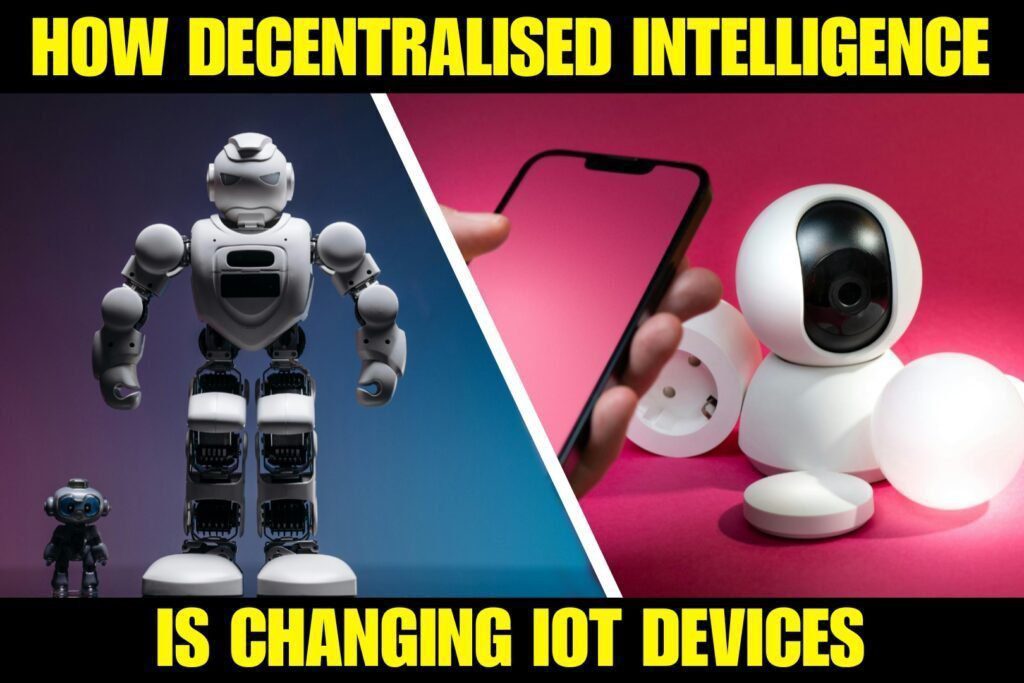Imagine thousands of tiny robots, no bigger than insects, cooperating like ants to accomplish complex tasks—rescuing disaster victims, repairing infrastructure, or mapping distant planets. This isn’t science fiction. In 2025, swarm robotics, powered by decentralized AI, is reshaping the boundaries of robotics, autonomy, and distributed intelligence.
Inspired by the collective behavior of bees, birds, and ants, swarm robotics involves the coordination of large numbers of simple robots that interact with each other and their environment to achieve global objectives—without centralized control. It is one of the most exciting frontiers in both robotics and artificial intelligence.
What Is Swarm Robotics?
Swarm robotics is a subfield of multi-robot systems where large numbers of physically independent robots cooperate to perform tasks autonomously. Each unit in the swarm:
- Has limited sensing and processing power.
- Operates based on simple local rules.
- Communicates with nearby peers.
- Contributes to a collective intelligence.
This system mirrors natural swarms, where emergent behavior—complex global behavior arising from local interactions—enables intelligent group action, such as finding food or avoiding predators.
Why Decentralized AI Matters
Unlike traditional robotics, where a central system dictates movement and logic, swarm robotics leverages decentralized AI algorithms that allow each robot to act independently based on local information.
Key enablers:
- Multi-agent reinforcement learning (MARL)
- Federated learning for robotics
- Consensus-based decision-making
- Bio-inspired heuristics (e.g., stigmergy, flocking)
This decentralized architecture is:
- Robust (no single point of failure)
- Scalable (more units = more capacity)
- Flexible (easy to adapt to dynamic environments)
Applications of Swarm Robotics in 2025
🌍 Search and Rescue
Swarm bots equipped with cameras and thermal sensors can autonomously navigate rubble after earthquakes or building collapses, locating survivors faster than human teams or drones alone.
- Example: The Swarm Rescue Project by EPFL and ETH Zurich uses flying microbots to enter unstable disaster zones.
🏗️ Construction and Maintenance
Swarm robots can collaboratively 3D-print structures, repair pipelines, or inspect hard-to-reach areas like wind turbines and underwater cables.
- Example: BAE Systems and the UK MOD have explored swarm drones for self-assembling temporary military infrastructure.
🚜 Precision Agriculture
Micro-robots patrol crop fields, assessing plant health, delivering microdoses of nutrients or pesticides, and communicating findings to optimize yield.
- Example: Small Robot Company in the UK develops swarms of farmbots for sustainable agriculture.
🛰️ Space Exploration
NASA and ESA are developing robotic swarms for Martian surface mapping, asteroid mining, and planetary infrastructure assembly, where human intervention is impossible.
- Example: NASA’s Spheres project and the Astrobee swarm platform are early prototypes for future interplanetary missions.
⚙️ Industrial Automation
Swarm logistics platforms are revolutionizing warehouses. Robots autonomously rearrange inventory, form temporary assembly lines, and optimize delivery routes.
- Example: Ocado’s AI-driven swarm robots sort and pack 2 million groceries per week in the UK, outperforming traditional conveyor systems.
How Swarm AI Works
Swarm robotics relies on a few core principles:
| Principle | Description |
|---|---|
| Local Sensing | Each robot senses only its immediate surroundings. |
| Decentralized Control | No central server; decisions made by each unit. |
| Simple Rules | Each robot follows basic behaviors (e.g., avoid obstacle, follow light). |
| Emergent Behavior | Complex global tasks arise from individual actions. |
Common algorithms include:
- Flocking (like birds): cohesion, alignment, and separation.
- Stigmergy: coordination via environmental markers (used by ants).
- Boids Algorithm: for animation and coordination.
- Ant Colony Optimization (ACO): for dynamic pathfinding.
Machine learning enhances these by letting robots learn optimal behaviors from experience—especially with reinforcement learning that rewards efficient cooperation.
Swarm Hardware in 2025
Modern swarm bots are not just clever—they’re affordable, scalable, and built for real-world deployment.
- Size: As small as 2–3 cm, like MIT’s Kilobots.
- Cost: <$100 per unit due to open-source hardware and mass production.
- Sensing: Cameras, LIDAR, infrared, vibration, and acoustic sensors.
- Communication: BLE mesh, ultra-wideband (UWB), or 5G/6G low-latency channels.
- Power: Solar, battery, or inductive charging via smart docking stations.
Security and Ethics of Autonomous Swarms
While promising, swarm robotics raises critical ethical and security concerns:
- Military Use: Weaponized drone swarms are already under development in several countries, leading to discussions on “lethal autonomous weapons.”
- Privacy Intrusion: Surveillance swarms could monitor individuals at an unprecedented scale.
- AI Alignment Risks: If swarm learning systems are not aligned with human intent, unpredictable or unsafe emergent behaviors could occur.
- Swarm Hacking: A decentralized system is hard to secure. A compromised unit could mislead the entire swarm or sabotage operations.
Regulations like the UN CCW (Convention on Certain Conventional Weapons) and EU AI Act are beginning to address such risks, but global governance is still lacking.
Open Research Challenges
Despite progress, several hurdles remain before swarms become ubiquitous:
- Energy autonomy: Powering micro-robots for extended, real-world missions remains difficult.
- Learning in the wild: Adapting to unstructured and unknown environments with minimal supervision.
- Swarm-to-human interaction: Creating intuitive ways for humans to communicate with and control swarms.
- Robust coordination at scale: Ensuring reliable performance with 10,000+ units.
Conclusion
Swarm robotics, guided by decentralized AI, is rewriting the rules of what machines can do—individually and collectively. The field promises systems that are adaptive, intelligent, resilient, and scalable beyond any traditional architecture.
In 2025 and beyond, these tiny autonomous agents will increasingly influence disaster response, agriculture, industrial automation, and space exploration. As their coordination becomes more fluid and their AI smarter, swarms may become the foundational infrastructure of the physical world—an invisible force, constantly working behind the scenes to keep society running.
But with great potential comes great responsibility. Developers, researchers, and regulators must ensure that these systems remain transparent, controllable, and aligned with human values. In a world run by machines, the most powerful network may no longer be the internet—it may be the swarm.
